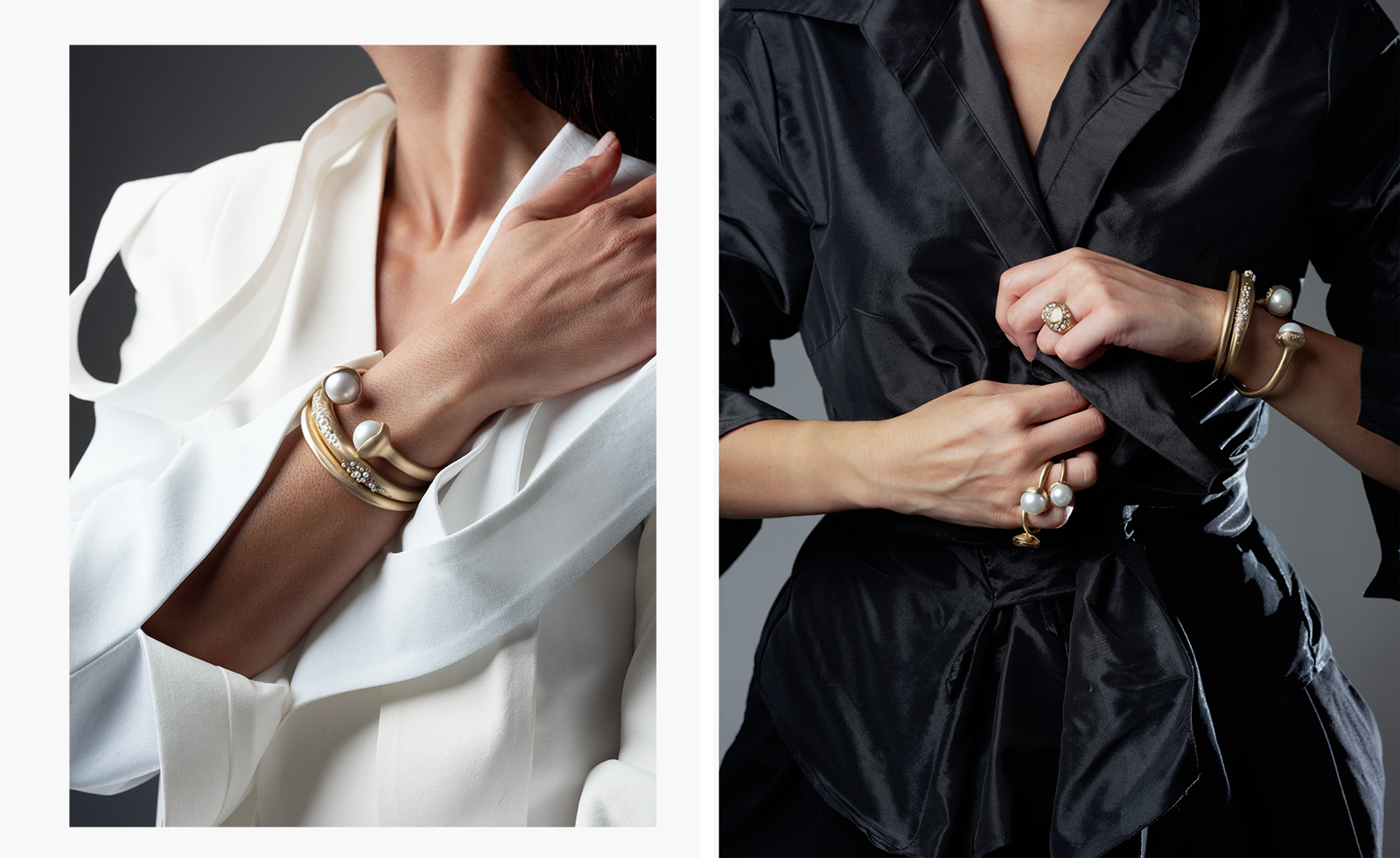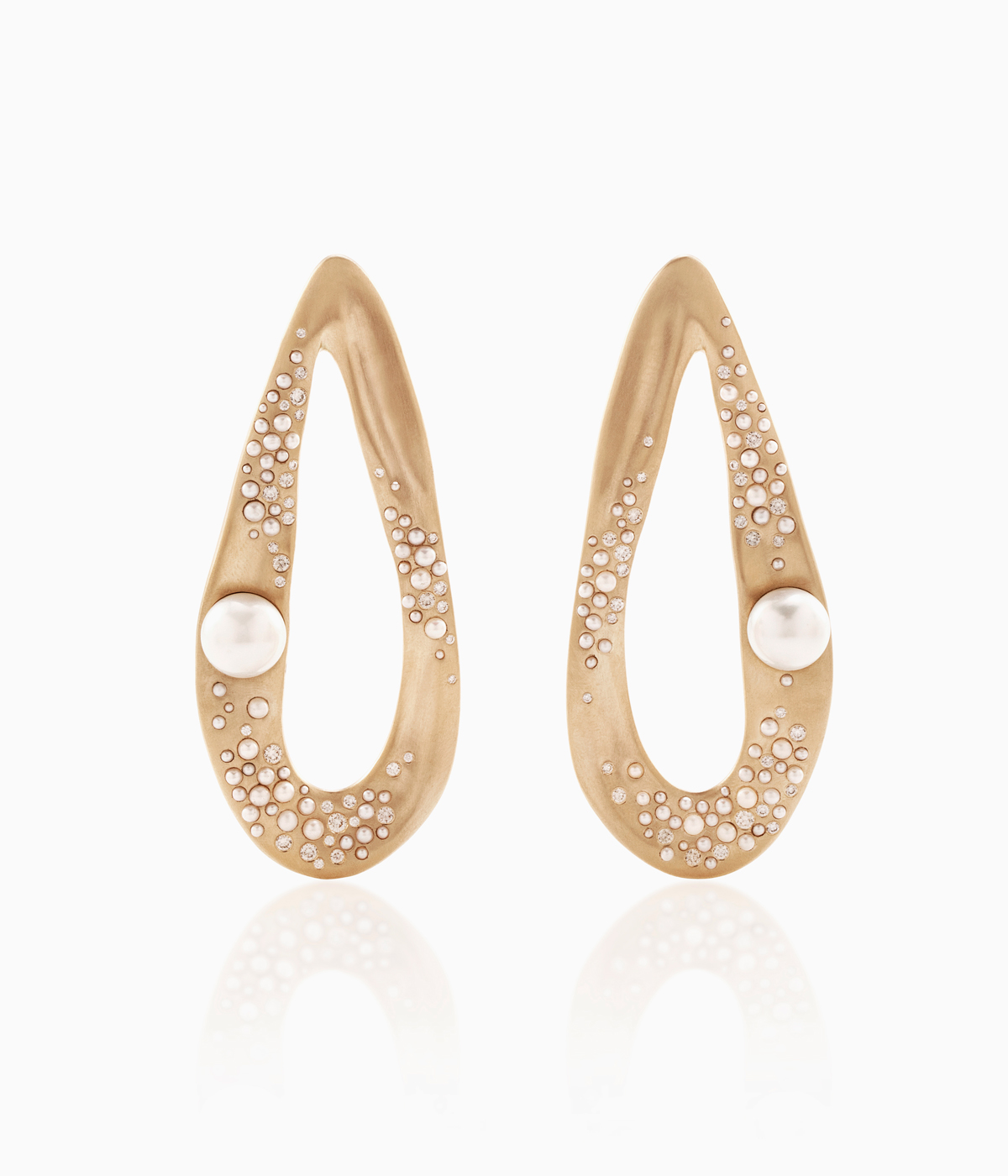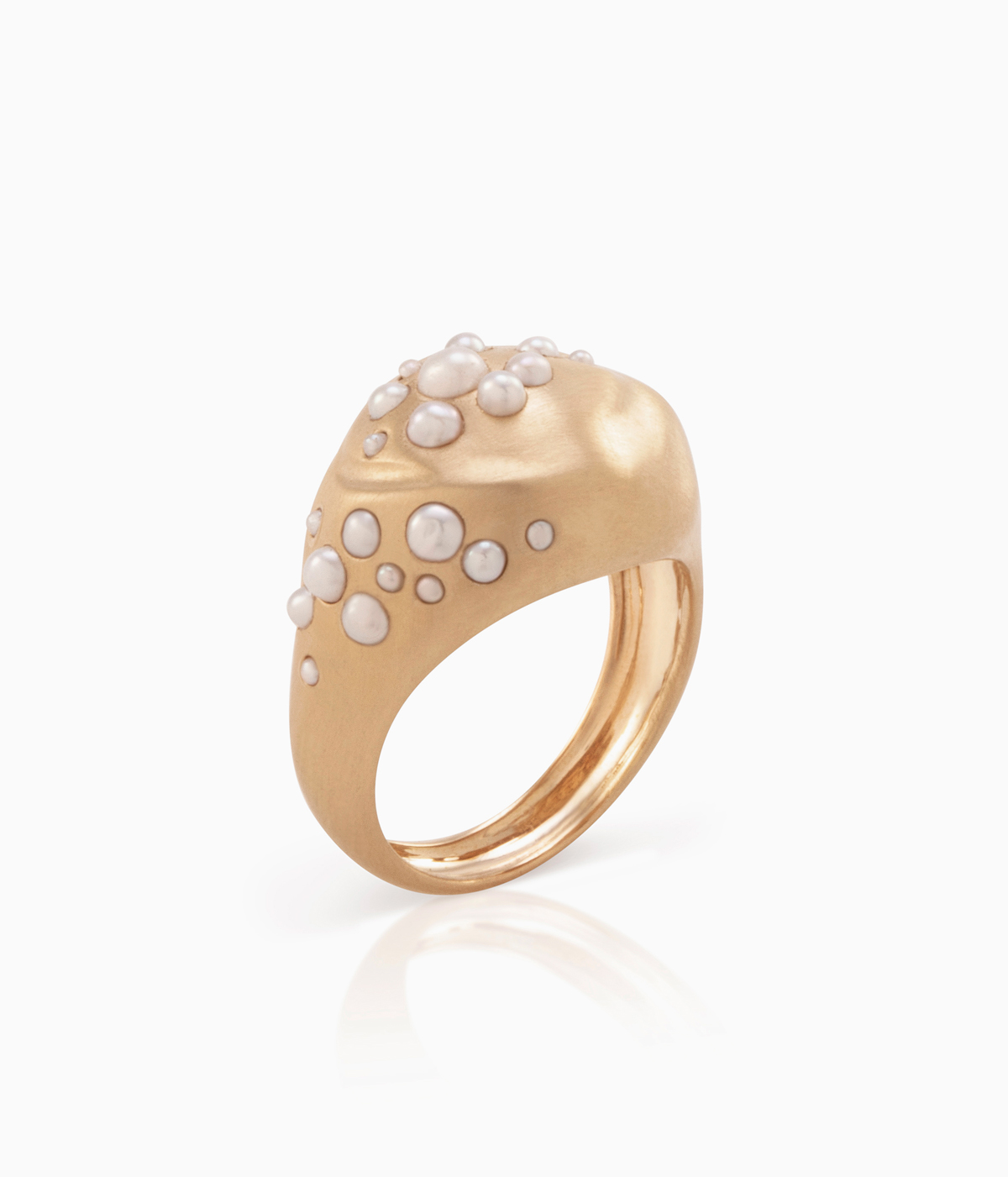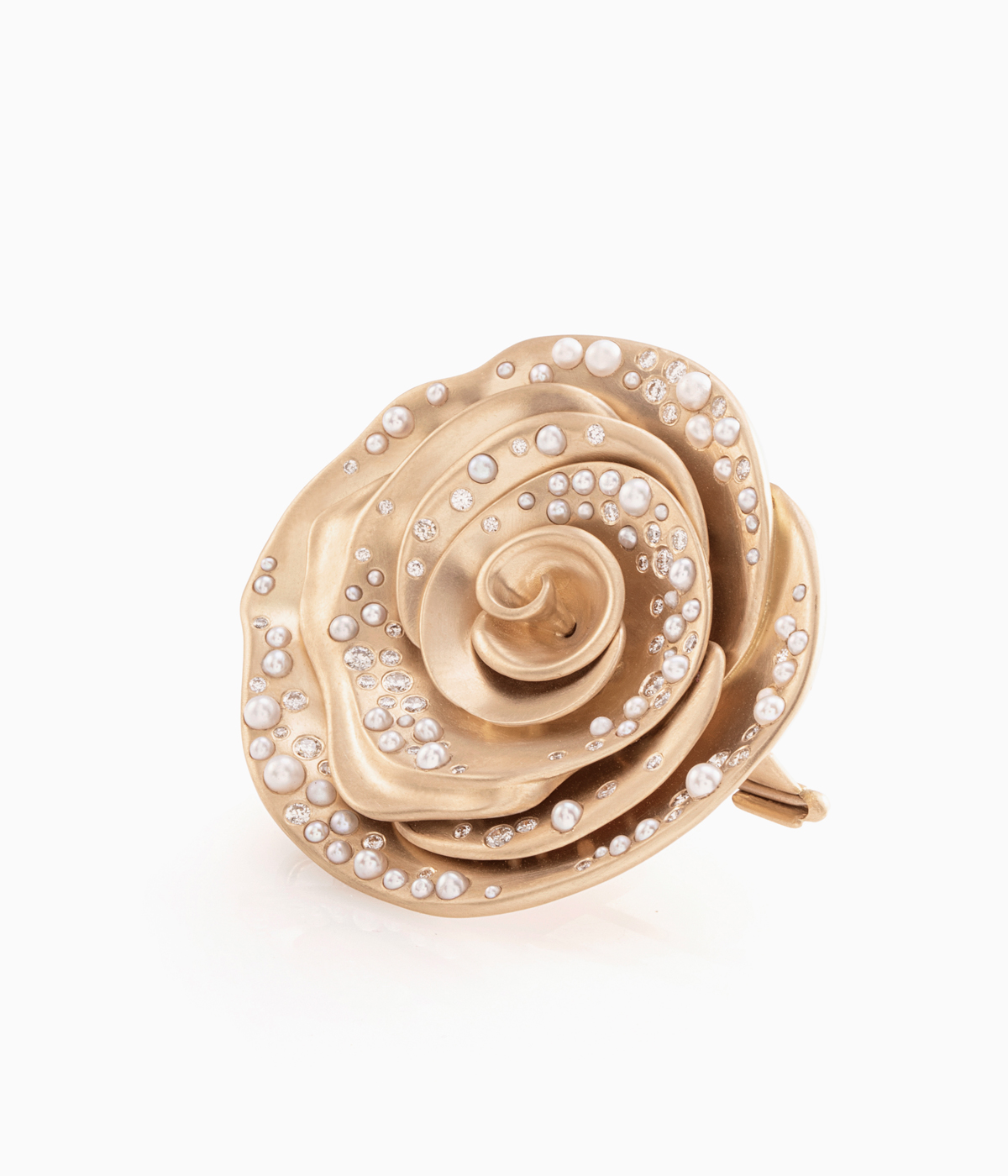Nada Ghazal's textured gold brings a modern pop to pearls
Nada Ghazal unveils a new jewellery collection, 'Pop of Hope', where irregularly sized pearls meet organic forms and scattered gem setting

Beirut-born, London-based jeweller Nada Ghazal draws on an eclectic array of references for her boldly drawn, appealingly offbeat pieces. Oversized rings, bracelets and earrings, peppered with vibrant rainbows of precious stones and asymmetrical silhouettes characterise a style which embraces irregular design codes.

It is a distinctive aesthetic underlined in new collection ‘Pop of Hope’, which sees Ghazal returning to pearls after a long break. ‘In the ‘Pop of Hope’ collection, I combined irregularly sized large and much smaller pearls with my signature brushed gold, scattered gem setting, and organic style,’ she says. ‘The seed pearls sometimes appear as though they are submerged in the gold and at other times, pop up from it to convey the arrays of feelings we have. The pearls are paired with diamonds, which I feel, reveal our inner essence of delicate strength, and femininity and create a harmonious blend of timeless elegance, and pure sophistication.’

In tribute to her heritage, Ghazal crafts her pieces in her Beirut atelier, weaving this storytelling throughout the jewellery. ‘I wanted to create pieces that would serve as personal tokens of hope, reflecting not only my desire but also the desires and aspirations of anyone seeking the feeling of hope—whether that’s hope for love, success, happiness, or something else,’ she adds. ‘When I started designing, I associated hope with pearls, a gem I haven’t used for a long time and incorporated both large and small seed pearls. Pearls are formed over time through the stress and irritation endured by resilient oysters, resulting in something beautiful and symbolic which exactly reflected how I felt.’
The size and delicacy of seed pearls required an adjustment to her usual technique. ‘One of the main hurdles I faced was working with the seed pearls, sourcing them in such small sizes was in itself difficult, and adapting my gem-setting technique to fit these tiny pearls was also challenging. In addition, I wanted to remain true to my style while honouring the classic beauty of pearls. Balancing these elements and ensuring the collection maintained a sense of modernity, while still feeling timeless, was definitely a rewarding experience.’

Receive our daily digest of inspiration, escapism and design stories from around the world direct to your inbox.
Hannah Silver is the Art, Culture, Watches & Jewellery Editor of Wallpaper*. Since joining in 2019, she has overseen offbeat art trends and conducted in-depth profiles, as well as writing and commissioning extensively across the worlds of culture and luxury. She enjoys travelling, visiting artists' studios and viewing exhibitions around the world, and has interviewed artists and designers including Maggi Hambling, William Kentridge, Jonathan Anderson, Chantal Joffe, Lubaina Himid, Tilda Swinton and Mickalene Thomas.
-
 A day in Ahmedabad – tour the Indian city’s captivating architecture
A day in Ahmedabad – tour the Indian city’s captivating architectureIndia’s Ahmedabad has a thriving architecture scene and a rich legacy; architect, writer and photographer Nipun Prabhakar shares his tips for the perfect tour
-
 You can now stay in one of Geoffrey Bawa’s most iconic urban designs
You can now stay in one of Geoffrey Bawa’s most iconic urban designsOnly true Bawa fans know about this intimate building, and it’s just opened as Colombo’s latest boutique hotel
-
 Pentagram’s identity for eVTOL brand Vertical Aerospace gives its future added lift
Pentagram’s identity for eVTOL brand Vertical Aerospace gives its future added liftAs Vertical Aerospace reveals Valo, a new air taxi for a faster, zero-emission future, the brand has turned to Pentagram to help shape its image for future customers